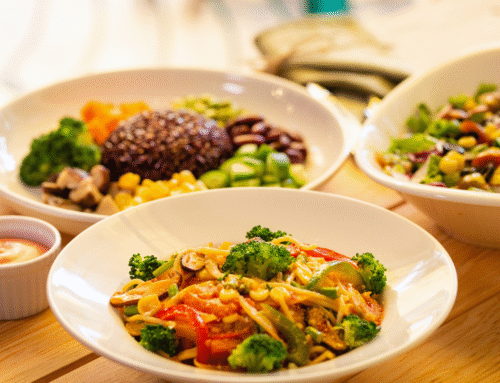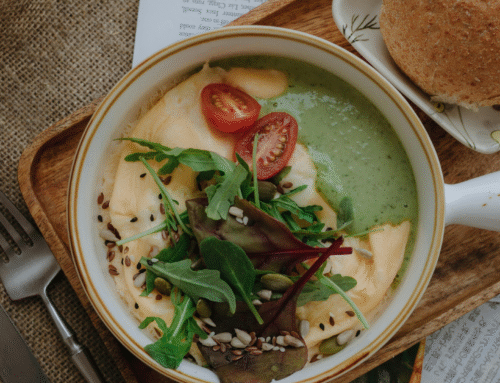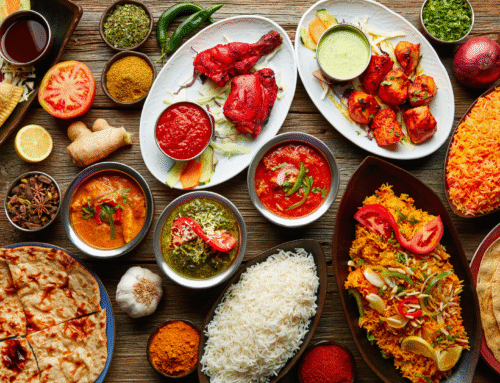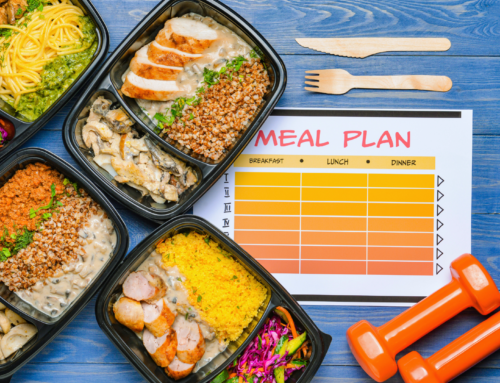Meal prepping can transform both dietary habits and daily routines. It not only saves time during busy weekdays but also promotes healthier eating choices. By organizing meals in advance, individuals can avoid the stress of last-minute cooking and make more mindful food decisions.
Effective meal prepping begins with careful planning. Identifying recipes that utilize seasonal ingredients and personal preferences helps streamline the grocery list and cooking process. Following a consistent schedule can also ensure that meal preparation becomes a seamless part of the weekly routine.
Incorporating tips such as batch cooking, proper food storage, and utilizing versatile ingredients can enhance the meal-prepping experience. These strategies not only maximize efficiency but also encourage variety in meals, reducing the monotony that can come with repeated dishes.
Meal Prepping Basics
Meal prepping involves preparing meals in advance to save time and maintain a healthier diet. Understanding its fundamentals, benefits, and how it differs from meal planning can enhance this practice.
What Is Meal Prepping
Meal prepping is the process of preparing meals ahead of time, typically for the week. This practice includes cooking, portioning, and storing meals to streamline eating throughout busy days.
People often prepare various dishes or batches of staple foods, such as grains, proteins, and vegetables. These can be mixed and matched to create balanced meals quickly.
By having prepped meals ready, individuals can avoid unplanned eating, which can lead to less healthy food choices. The goal is to create convenience while ensuring nutritious options are readily available.
Benefits of Meal Prepping
There are numerous benefits to meal prepping. First, it saves time during the week. With meals prepared, there’s no need to cook from scratch each day.
Secondly, it can also be cost-effective. Buying ingredients in bulk and preparing meals reduces the likelihood of impulse purchases and food waste.
Additionally, meal prepping promotes healthier eating habits. It allows control over ingredients, serving sizes, and overall nutrition. It’s easier to stick to dietary goals when meals are ready to go.
Lastly, meal prepping can reduce stress. Knowing that meals are prepared eases the burden of daily cooking, making healthier choices more attainable.
Meal Prep vs. Meal Planning
Meal prepping and meal planning are related but distinct concepts. Meal planning focuses on deciding what to eat in the future, often involving creating a weekly menu. This strategy includes grocery shopping lists and recipes.
In contrast, meal prepping involves actual cooking and storing meals. While meal planning sets the framework, meal prepping executes it.
Both methods are beneficial and can complement each other. Meal planning can streamline the meal prep process, making it more efficient. Combining both strategies helps ensure that healthy, home-cooked meals are consistently available.
Essential Ingredients and Tools
A well-stocked kitchen is the foundation of effective meal prepping. Key ingredients and tools play a vital role in streamlining the process and enhancing flavors. Understanding the essentials will help maintain variety and nutrition in meal choices.
Stocking a Pantry for Meal Prep
A stocked pantry is crucial for successful meal prep. Start with the basics:
- Grains: Brown rice and quinoa are excellent options. They provide complex carbohydrates and can serve as versatile bases for various meals.
- Canned Goods: Keep canned beans, tomatoes, and low-sodium broths readily available. These items add flavor, protein, and fiber to meals.
- Condiments: Having olive oil, vinegar, and soy sauce on hand can help enhance dishes and add depth to recipes.
Incorporating these staples into the pantry ensures flexibility in meal options and meets dietary preferences.
Selecting Proteins and Grains
Proteins form a central part of meal prepping. They support muscle repair and satiety. A variety of options should be considered:
- Chicken Breast: Lean and easily adaptable, chicken breast can be grilled, baked, or shredded for different meals.
- Turkey: Ground turkey is an excellent substitute and works in various cuisines.
- Plant-Based Options: Incorporate lentils and chickpeas for vegetarian and vegan choices.
When choosing grains, balance is key. Brown rice and quinoa not only pair well with proteins but also bring essential nutrients.
Spices and Flavor Enhancers
Spices elevate meals significantly. A basic spice rack can transform simple dishes into flavorful experiences. Essential spices include:
- Cumin: Works well in a variety of cuisines, adds warmth to dishes.
- Paprika: Offers a smoky flavor that enhances proteins and vegetables alike.
- Garlic Powder and Onion Powder: Convenient options for quick flavor boosts.
Additionally, using fresh herbs like basil, cilantro, and parsley can provide freshness and enhance the meal’s visual appeal. Incorporating yogurt and cheese can also add rich textures and flavors to prepped meals.
Step-By-Step Meal Prepping Tips
Effective meal prepping involves several organized steps. Focus is crucial on creating a comprehensive shopping list, optimizing shopping time, mastering batch cooking, and creatively using leftovers.
Making an Effective Shopping List
An effective shopping list can save time and reduce food waste. It should be comprehensive and structured. Start by categorizing items by sections of the grocery store, such as:
- Fruits and Vegetables
- Proteins
- Grains and Legumes
- Condiments and Spices
When compiling the list, aim to include items that complement each other. This allows for versatile meals. For instance, chicken can pair with rice, vegetables, or be in a salad. Using apps or a simple notepad can help keep the list handy for quick additions. Ultimately, a well-thought-out list prevents impulse buys and ensures a smooth shopping experience.
Efficient Shopping Strategies
Shopping efficiently is key to a successful meal prep routine. Begin by choosing the right time to shop; early mornings or weekdays are often less crowded. This helps in navigating the store swiftly.
Creating a map of the store can also streamline the process. Break down the shopping trip into sections based on the layout. Stick to the list to avoid distractions. Consider buying in bulk for staple items like grains and proteins. This can reduce costs and save trips to the store.
Using grocery delivery services can be advantageous for time-strapped individuals. Pick items that are readily available, considering seasonal produce for freshness and cost-effectiveness.
Batch Cooking and Storage
Batch cooking involves preparing multiple servings at once, which saves time throughout the week. Begin by choosing a few simple recipes that share common ingredients. For example, a stir-fry can use varied vegetables and proteins.
Utilize cooking methods like roasting, steaming, or grilling, as they enhance flavor without excessive effort. Invest in good-quality storage containers, ideally glass or BPA-free plastic. Label containers with dates to keep track of freshness. Portioning meals into single servings makes grabbing meals simple, ensuring that they are ready for the week ahead.
Making the Most of Leftovers
Maximizing leftovers is a critical part of meal prepping. Instead of viewing leftovers as second-tier meals, consider them an opportunity for creativity. Use them as base ingredients for new meals. For example, leftover roasted vegetables can be integrated into omelets or salads.
Storing leftovers properly is essential. Use airtight containers to maintain freshness, and label them with dates. Consider options for repurposing ingredients, such as turning roast chicken into a soup or salad. This approach not only saves money but also minimizes food waste, making meals more sustainable.
Healthy Meal Prep Strategies
Effective meal prep hinges on a few key strategies that ensure meals are both nutritious and satisfying. By focusing on balanced nutrients, portion control, and integrating healthy choices, individuals can streamline their cooking while promoting a healthier lifestyle.
Balancing Nutrients
Creating balanced meals requires incorporating proteins, carbohydrates, and fats. A well-rounded plate might include:
- Proteins: Lean meats, beans, or legumes
- Carbohydrates: Whole grains, vegetables, or fruits
- Fats: Healthy oils, nuts, or avocados
Aim for a ratio of 40% carbohydrates, 30% proteins, and 30% healthy fats. Including a variety of colors and textures ensures essential vitamins and minerals. Meal prep should emphasize whole foods over processed options to boost nutritional value.
Portion Control Techniques
Practicing portion control is essential for maintaining a healthy diet. Preparing meals in divided containers can help with portion sizes. Consider using:
- Measuring cups: To ensure accurate serving sizes
- Food scales: For more precision, especially with proteins
Labeling containers with calorie counts can also promote mindful eating. A typical serving size can include:
- 1/2 plate of vegetables
- 1/4 plate of lean protein
- 1/4 plate of whole grains
This method aids in reducing excess calorie intake while ensuring balanced nutrition.
Integrating Healthy Choices
Incorporating healthy choices into meal prep involves selecting nutrient-dense ingredients. Stocking up on seasonal produce can enhance flavor and freshness. Consider these tips:
- Bulk cooking: Choose recipes that can be cooked in larger quantities, such as soups or stir-fries.
- Smart swaps: Replace refined grains with whole grains or opt for Greek yogurt instead of sour cream.
Flavor enhancement can come from herbs and spices rather than excess salt or sugar. Planning meals around nutrient-rich ingredients makes healthy eating enjoyable and sustainable.





Leave A Comment